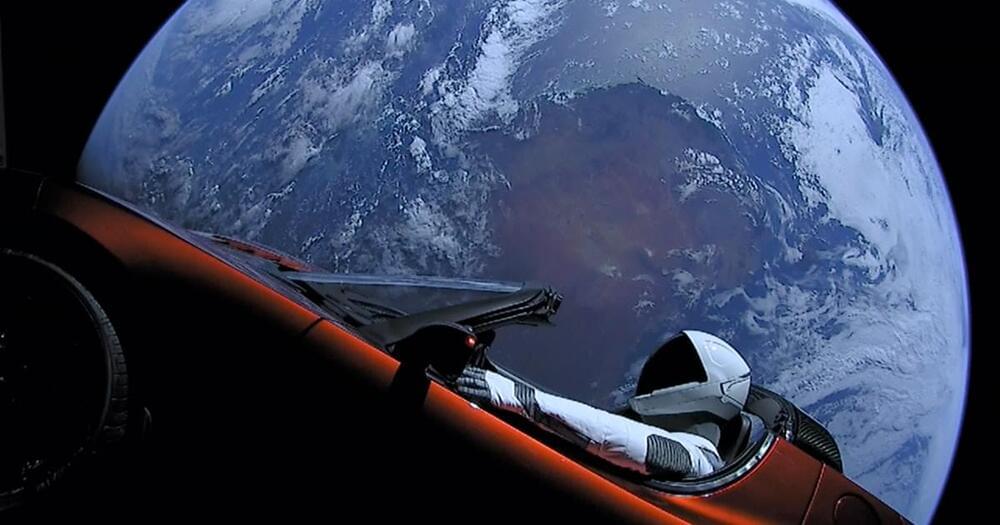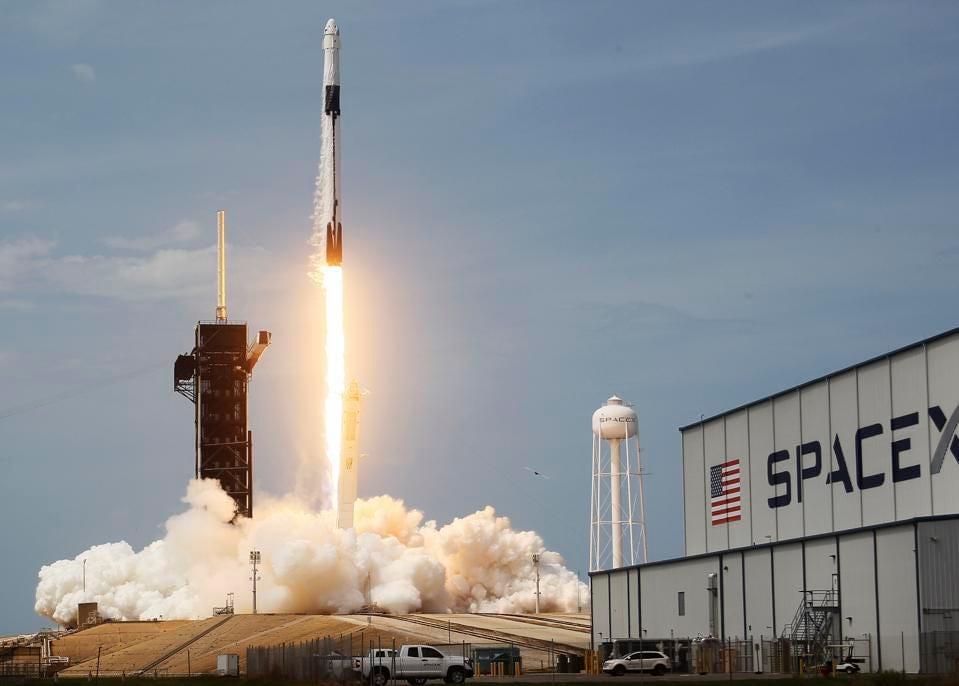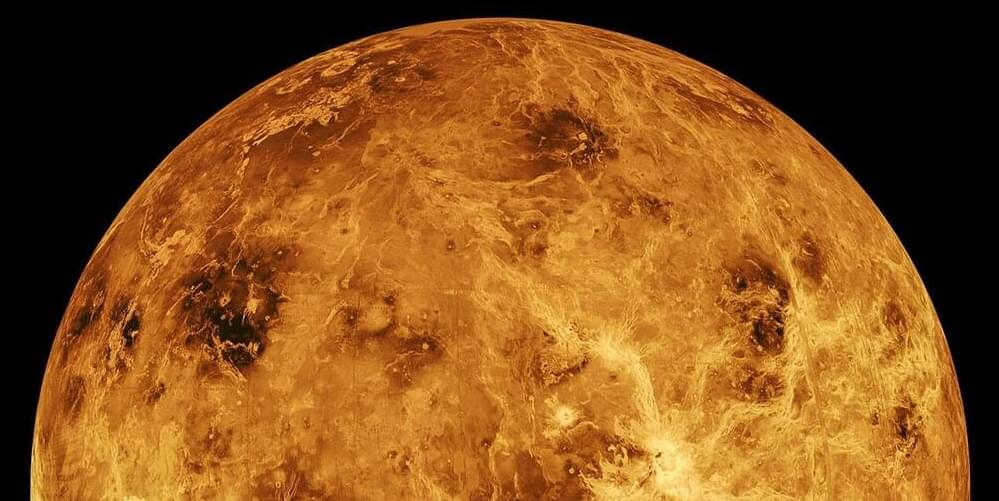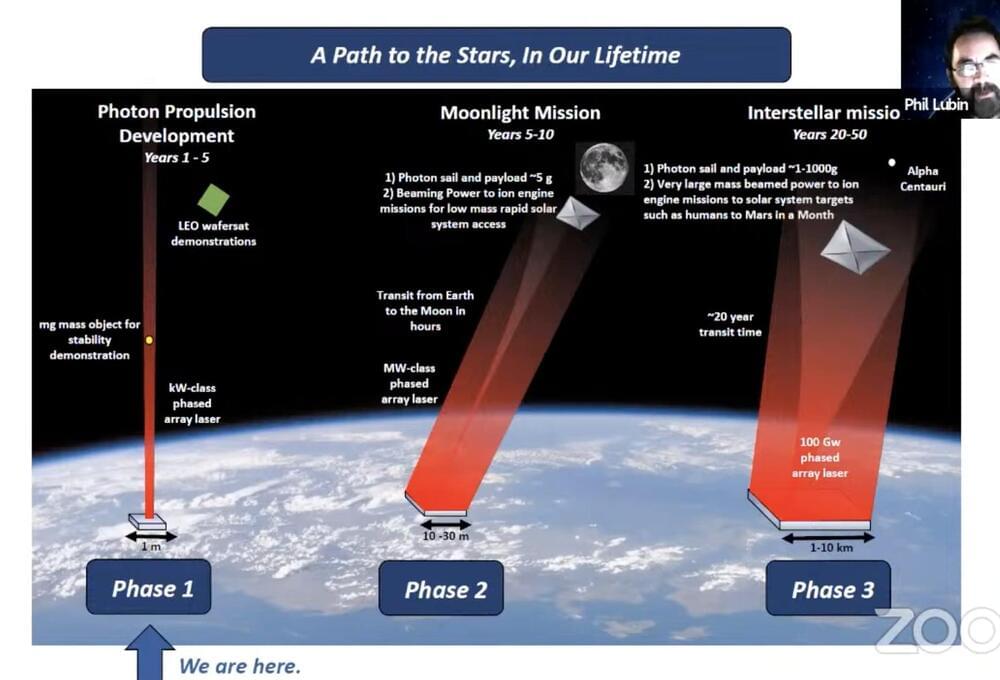SpaceX CEO Elon Musk launched his red Tesla Roadster electric car on a tour of the Solar System. But did it really orbit Mars?



SpaceX’s Crew Dragon is just going to get busier shuttling astronauts in the coming years.
NASA announced it intends to issue a sole-source modification to SpaceX’s long-term contract to send astronauts to the International Space Station. This follows an agency call for proposals back in October for more flight options to send people to space.
Boeing’s Starliner spacecraft, which is the other major system, is not quite yet ready for humans following a difficult uncrewed test flight in 2019 that never saw the spacecraft reach the ISS. Starliner has spent some time fixing computer glitches and other issues (including a valve problem that delayed an expected 2021 launch) and is now expecting a second uncrewed test flight by 2022.
The October solicitation, NASA noted, confirms SpaceX is the only viable choice for the time being, given the agency’s safety requirements and the need to keep the space station staffed continuously in the coming years.
Full Story:

Robots are already in space. From landers on the moon to rovers on Mars and more, robots are the perfect candidates for space exploration: they can bear extreme environments while consistently repeating the same tasks in exactly the same way without tiring. Like robots on Earth, they can accomplish both dangerous and mundane jobs, from space walks to polishing a spacecraft’s surface. With space missions increasing in number and expanding in scientific scope, requiring more equipment, there’s a need for a lightweight robotic arm that can manipulate in environments difficult for humans.

Robots are already in space. From landers on the moon to rovers on Mars and more, robots are the perfect candidates for space exploration: they can bear extreme environments while consistently repeating the same tasks in exactly the same way without tiring. Like robots on Earth, they can accomplish both dangerous and mundane jobs, from space walks to polishing a spacecraft’s surface. With space missions increasing in number and expanding in scientific scope, requiring more equipment, there’s a need for a lightweight robotic arm that can manipulate in environments difficult for humans.
However, the control schemes that can move such arms on Earth, where the planes of operation are flat, do not translate to space, where the environment is unpredictable and changeable. To address this issue, researchers in Harbin Institute of Technology’s School of Mechanical Engineering and Automation have developed a robotic arm weighing 9.23 kilograms—about the size of a one-year-old baby—capable of carrying almost a quarter of its own weight, with the ability to adjust its position and speed in real time based on its environment.
They published their results on Sept. 28 in Space: Science & Technology.

Neutron’s structure will be comprised of a new, specially formulated carbon composite material that is lightweight, strong, and can withstand the immense heat and forces of launch and re-entry again and again to enable frequent re-flight of the first stage. The launch vehicle will also be mostly reusable, designed to land on a landing pad after launch. It starts with Neutron’s unique shape, a tapered rocket with a wide base to provide a robust, stable base for landing, eliminating the need for complex mechanisms and landing legs.
“Neutron is not a conventional rocket. It’s a new breed of the launch vehicle with reliability, reusability, and cost reduction that is hard-baked into the advanced design from day one. Neutron incorporates the best innovations of the past and marries them with cutting-edge technology and materials to deliver a rocket for the future,” said Peter Beck, Rocket Lab founder, and CEO.
At 40 meters (131 feet) tall with a 4.5-meter (14.7 ft) diameter, the Neutron rocket will be more than double the size of the Electron. Neutron will be powered by seven entirely new rocket engines, called Archimedes – a reusable liquid oxygen/methane gas generator cycle engine capable of 1-meganewton thrust and 320 seconds of ISP. The rocket will be capable of putting between eight and 15 tons into low Earth orbit.

Limitless Space Institute gave out nine interstellar space-related grants for about $1 million to 2 million each. Phil Lubin’s direct laser propulsion group received a grant and they will use to prove out their directed laser propulsion system at the 10–20 watt level. They are also working on components at the kilowatt to tens of kilowatt level. The plan would be to scale to tens of kilowatts and work towards power beaming to the moon for experiments. In 5–10 years, they hope to reach megawatt levels.
If they reach 500 megawatts then direct laser propulsion could be used for 30 day transit times to Mars. When the system scales to the gigawatt or tens of gigawatt level with a matching deceleration and launching system on Mars this would enable 2.5 day transit times between Earth and Mars. Increasing or decreasing mass by 10,000 times changes the speed by 10 times. A 100-gram package could sent ten times faster than a 1,000 kilogram package using the same size laser array and power system. You could send a 1,000 kilogram mission to Mars in 30 days or rapidly deliver an urgent package of 100 grams to Mars in about 3 days.
This system for urgent delivery of tiny packages with 1G acceleration and deceleration would be feasible in the 10–20 year time frame.
Blue Origin, Sierra Space, and others plan to build a new private space station in low-Earth orbit.
Blue Origin, Sierra Space, & others plan to build a new private space station in low-Earth orbit. NASA has chosen Orbital Reef for a funded Space Act Agreement.

SpaceX has begun building a launchpad for its Starship rockets in Florida, CEO Elon Musk announced on Friday, as the company looks to add another location to launch the mammoth rocket that is in development.
“Construction of Starship orbital launch pad at the Cape has begun,” Musk said in a tweet.
Starship is the massive, next-generation rocket SpaceX is developing to launch cargo and people on missions to the moon and Mars.

Following October’s news that Jeff Bezos’ Blue Origin spaceflight company planned to build its own commercial space station in low Earth orbit, NASA announced on Thursday it has selected the program for funding through a Space Act Agreement to further develop the station’s design. The funding is part of NASA’s Commercial LEO Development program, which aims to “develop a robust commercial space economy in LEO, including supporting the development of commercially owned and operated LEO destinations.”
“We are pleased that NASA supports the development of Orbital Reef, a revolutionary approach to making Earth orbit more accessible to diverse customers and industries,” Brent Sherwood, Senior Vice President of Advanced Development Programs for Blue Origin, said in a prepared statement. The station would be an orbital “mixed-use space business park” that would offer any number of turnkey services as well as reduced operational costs for burgeoning low-g industries “in addition to meeting the ISS partners’ needs.”
Blue Origin is partnering with Sierra Space in this project with the former focusing on the architecture and infrastructure of the station — everything from its design and construction to managing lift logistics using the New Glenn heavy launch system — while the latter is tasked with developing the station’s LIFE (Large Integrated Flexible Environment). Boeing is also helping out, designing the operations-maintenance-science module and leveraging its Starliner crew capsule. Genesis Engineering Solutions is involved as well. It’s working on a single person spacecraft that tourists and employees alike will be able to putter around in.